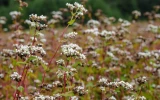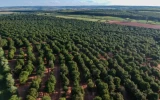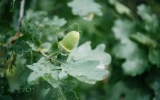Do Macadamia Trees Need a Pollinator?
In macadamias, successful crop yields are intimately tied to effective pollination. In this article, we'll understand how pollination works and how it can significantly impact the health and productivity of your macadamia trees.
Macadamia nuts depend primarily on insects, particularly bees, for pollination. While some macadamia trees are self-pollinating, the vast majority require cross-pollination. This means that pollen from one tree must be transferred to the flowers of another tree, usually by bees or other insects, to produce nuts.
When planting macadamia trees, you will need to select compatible varieties that can effectively pollinate each other, since cross-pollination can lead to higher yields and better nut quality. As you go through the article, we'll learn which varieties should be planted close together for more effective pollination.
Understanding macadamia pollination requirements is key for new orchard establishment, from selecting compatible cultivars, providing beehives, and designing the layout to optimize pollination conditions.
Summary
- Macadamia trees benefit significantly from cross-pollination, which can lead to increased nut production and overall tree health.
- The foraging behavior of insect pollinators, such as bees and beetles, and the structure of macadamia flowers make them highly effective in transferring pollen between flowers, contributing to successful nut production.
- While macadamia trees are predominantly self-pollinating due to their unique floral structure and prolonged flowering period, some varieties, such as Beaumont, Mauka, A4, and A16, may still benefit from cross-pollination.
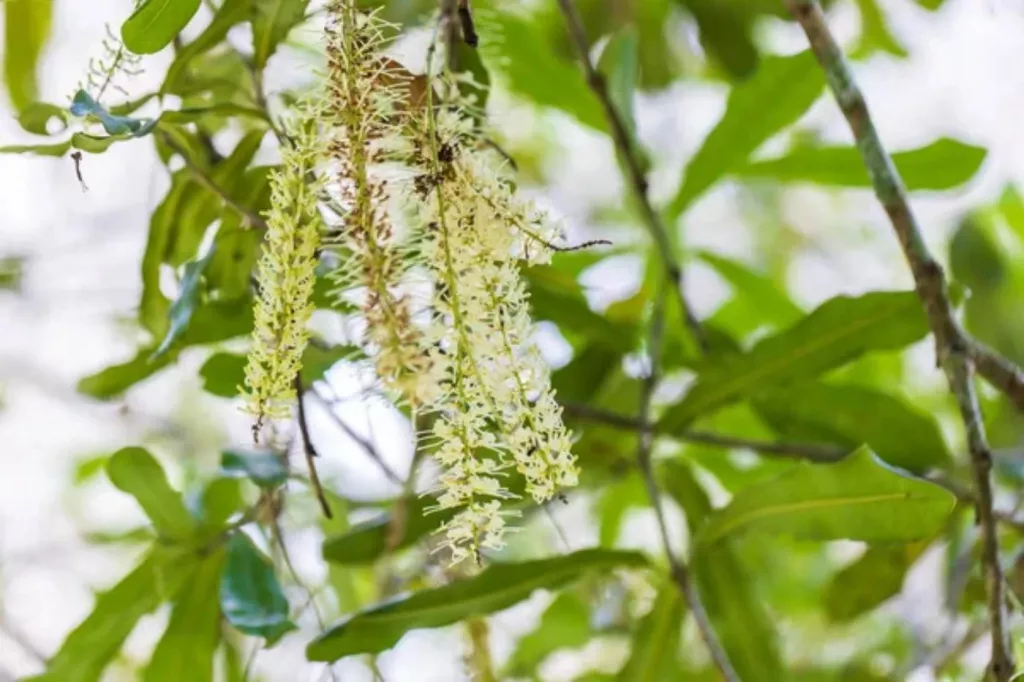
On this page:
Macadamia Trees Need a Pollinator
Macadamia trees do benefit significantly from cross-pollination. While a single macadamia tree can indeed produce nuts on its own due to self-fertility, for an abundant yield, having a partner for your tree can make a big difference.
Planting more than one macadamia tree can increase pollination, enhancing nut production. This cross-pollination involves the transfer of pollen from the flowers of one tree to another.
You could think of bees and other beneficial insects as friendly local mail carriers, delivering pollen between the blossoms to ensure a good crop of macadamia nuts. The more effective the pollination process, the more nuts you can expect to harvest.
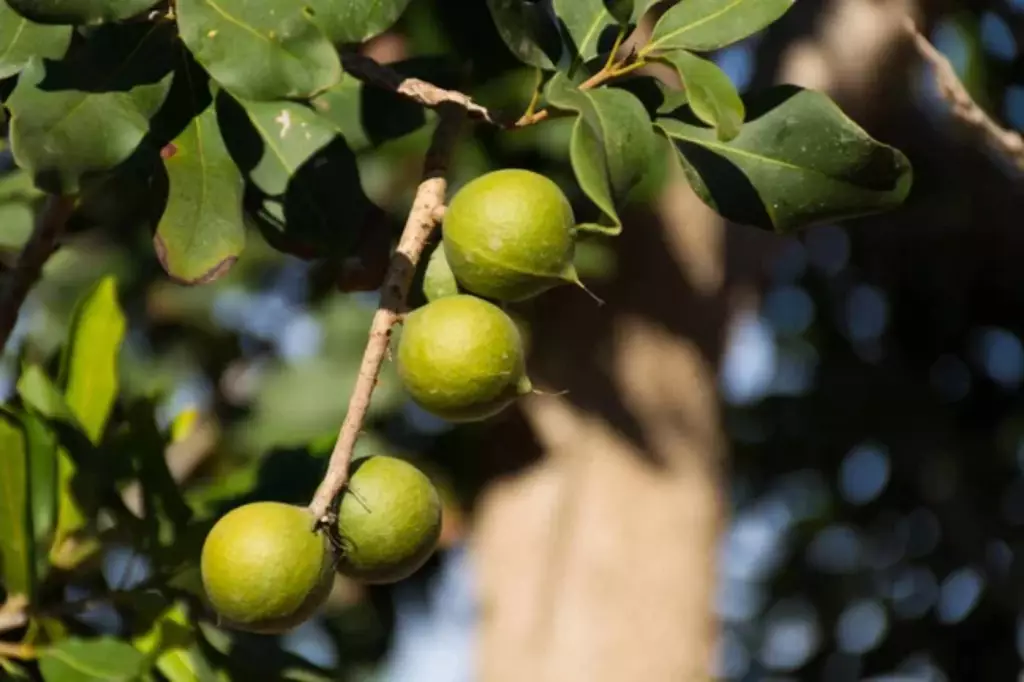
When selecting a macadamia tree, considering planting different varieties close to each other can be beneficial. This diversity not only contributes to better cross-pollination but can also make your macadamia harvest more resilient to various conditions.
There are two main pollination methods for macadamias: natural pollination, which relies on wind and insects and assisted pollination, where human intervention, such as hive placement in orchards, helps boost the number of pollinators.
What pollinates macadamia nuts?
Pollination by insects
Macadamia nuts are pollinated by insects, primarily bees and beetles. The process of pollination occurs when these insects visit the flowers of the macadamia tree in search of nectar and inadvertently transfer pollen from one flower to another.
Bees are highly efficient pollinators due to their foraging behavior and the electrostatic charge they generate as they fly, which helps pollen adhere to their bodies. Additionally, the buzzing sound produced by bees during pollination can dislodge pollen, aiding in the transfer process.
The macadamia tree produces small, creamy-white flowers that are rich in nectar, attracting a variety of pollinators. Bees are particularly effective pollinators of macadamia nuts due to their foraging behavior and the structure of the flowers, which are well-suited for bee pollination. In fact, the honey made out of macadamia nuts belongs to the list of some of the flowers that produce the darkest honey.
In commercial macadamia orchards, beekeepers often place beehives strategically within the orchards to ensure adequate pollination. This practice helps to maximize nut production by ensuring that a sufficient number of flowers are effectively pollinated.
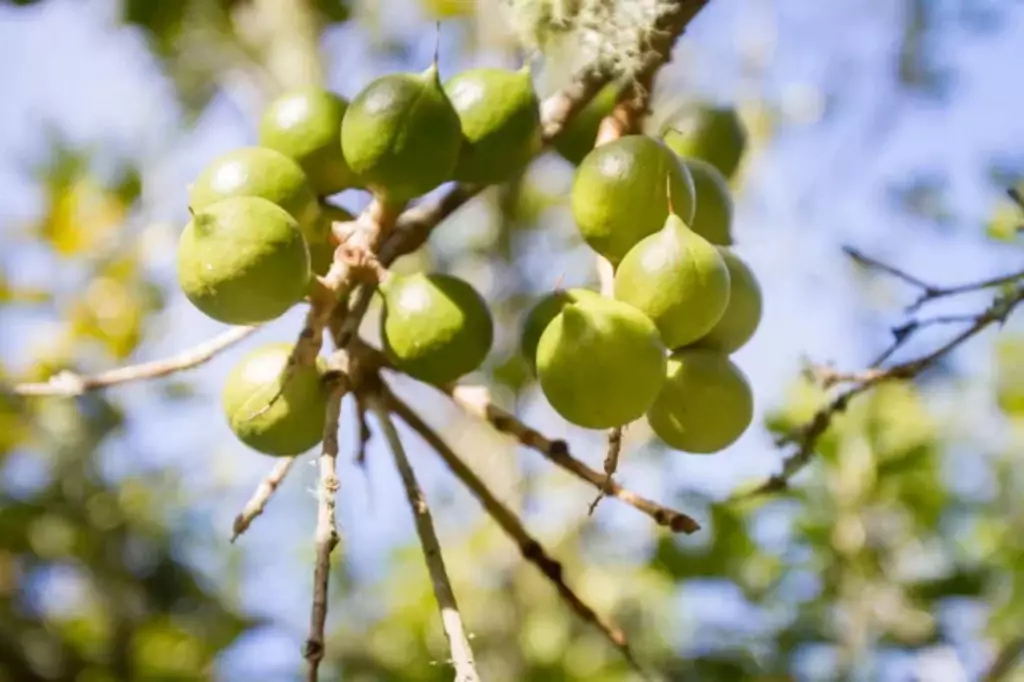
Apart from bees, other insect pollinators such as beetles and flies may also contribute to the pollination of macadamia trees, albeit to a lesser extent. These insects visit the flowers in search of nectar and inadvertently transfer pollen as they move between blossoms.
Wind pollination in macadamia trees
Wind can contribute to the pollination of macadamia trees by carrying pollen from one flower to another. In regions where insect activity may be limited, wind can serve as a secondary mechanism for transferring pollen between trees.
The movement of air can dislodge pollen from the male flowers and transport it to the female flowers, facilitating the fertilization process.
The lightweight nature of macadamia pollen makes it easily transportable by wind. As the wind blows through the orchard, it can carry the pollen over considerable distances, increasing the chances of reaching receptive flowers.
While wind pollination may not be as efficient or targeted as insect pollination, it can still play a role in ensuring some level of cross-pollination in macadamia trees.
However, note that the reliance on wind pollination is minimal compared to the contribution of insect pollinators in macadamia trees. Insect pollinators, such as bees and beetles, are more effective at transferring pollen directly between flowers and are considered the primary contributors to successful pollination in macadamia orchards.
Are macadamia trees self-pollinating?
One interesting fact about Macadamia trees is that they are predominantly self-pollinating. This means that they have the ability to produce viable seeds and nuts with the pollen from their own flowers.
This is an advantageous trait for macadamia cultivation, as it reduces the reliance on external pollinators and increases the likelihood of a successful fruit set.
The self-pollinating ability of macadamia trees is attributed to their unique floral structure and reproductive biology. Macadamia flowers are perfect, meaning they have both male (anthers) and female (stigma) reproductive organs within the same flower. This allows for self-pollination to occur when the pollen from the anthers comes into contact with the stigma of the same flower.
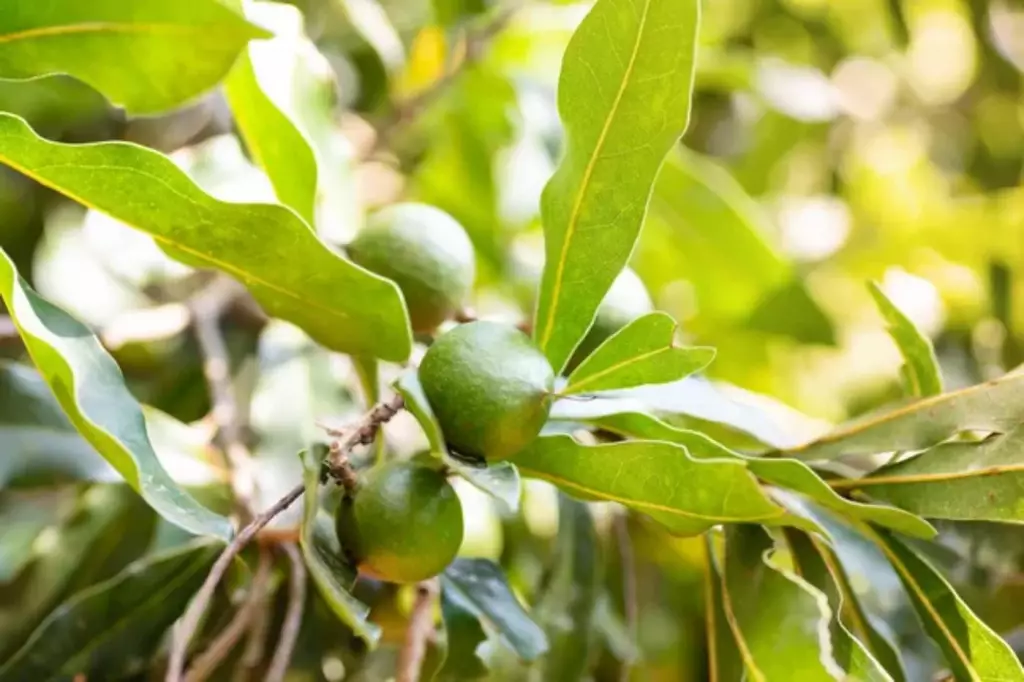
Furthermore, macadamia trees have a prolonged flowering period, with individual flowers remaining receptive to pollen for an extended period.
This increases the chances of successful self-pollination occurring within the tree, even in the absence of external pollinators.
However, while macadamia trees are capable of self-pollination, cross-pollination can also occur, especially with the help of wind and insects.
Do macadamias need cross-pollination?
While macadamia trees are generally self-pollinating, some varieties of macadamia trees may benefit from cross-pollination, which can potentially increase nut production and improve overall tree health.
The table below shows some varieties of macadamia that benefit from cross-pollination, as well as their compatible variety pairs:
| Variety | Characteristics | Compatible Cross-Pollination Partner |
|---|---|---|
| Beaumont | High-quality nuts, good productivity | A4 |
| Mauka | Excellent flavor, consistent bearing | A16 |
| A4 | Good nut quality | Beaumont |
| A16 | High yields, disease resistance | Mauka |
Edible and commercially available macadamia trees are often categorized into two main species: Macadamia integrifolia and Macadamia tetraphylla. Within each species, there are various cultivars that may have different pollination requirements and compatibilities.
Macadamia integrifolia varieties and their compatible Macadamia tetraphylla counterpart variety
The Beaumont variety is compatible with the A4 variety for cross-pollination
Beaumont is known as one the best macadamia varieties sought after for its high-quality nuts and good productivity, making it a desirable choice for cultivation. It can be cross-pollinated with A4. A4, on the other hand, exhibits good nut quality and is compatible with cross-pollination with Beaumont.
Mauka is compatible with the A16 variety for cross-pollination
Mauka is characterized by its excellent flavor and consistent bearing, making it a popular choice for cultivation. It can be cross-pollinated with A16. A16, known for its high yields and disease resistance, is compatible with cross-pollination with Mauka.
In commercial macadamia orchards, it is common to plant different cultivars to encourage cross-pollination and ensure optimal nut production. This approach can also help mitigate potential issues such as low fruit set or irregular bearing that may arise from solely relying on self-pollination.
Factors Affecting Pollination Success in Macadamia Trees
The floral characteristics of macadamia trees influence pollination success
The flowers of macadamia trees are arranged in clusters and are generally small and inconspicuous. They have both male and female reproductive organs, making them perfect for self-pollination.
The male reproductive organ, the stamen, consists of the anther and filament, which produce and release pollen. The female reproductive organ, the pistil, consists of the stigma, style, and ovary, which receives the pollen and facilitates fertilization.
In macadamia trees, the stigma is positioned above the anther, reducing the chances of self-pollination and promoting cross-pollination. This arrangement encourages pollen from a different macadamia tree to land on the stigma, increasing genetic diversity and enhancing the overall health of the tree population.
Additionally, the structure of the macadamia flower plays a role in attracting pollinators. The flowers produce a sweet, fragrant scent and nectar to entice bees and other insects.
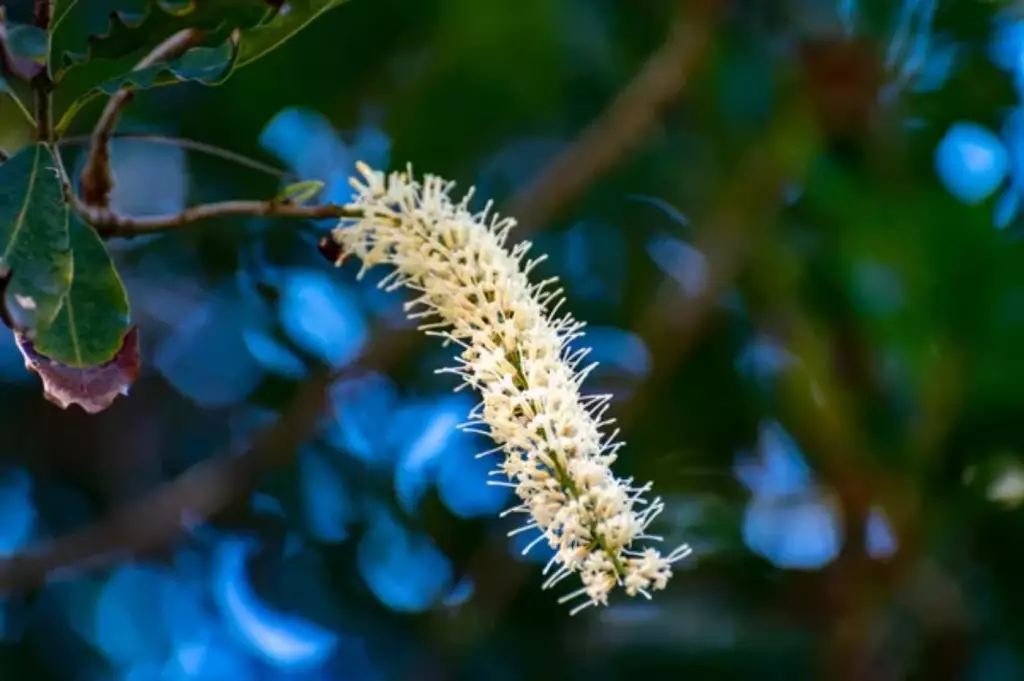
The presence of nectar serves as a reward for the pollinators and encourages them to visit multiple flowers, increasing the chances of successful pollination.
Weather conditions pollination activity and success in macadamia orchards
Temperature, humidity, and wind patterns all play crucial roles in influencing the behavior of pollinators and the reproductive processes of macadamia trees.
Bees, which are the primary pollinators of macadamia trees, are more active in warmer temperatures. Optimal temperatures increase bee activity, leading to more frequent visits to flowers and higher chances of successful pollination.
Additionally, temperature can affect the timing of flower receptivity and pollen release in macadamia trees, influencing the synchronization of these processes and ultimately impacting pollination success.
Humidity also influences pollination activity in macadamia orchards. High humidity levels can affect the quality of pollen by causing it to clump together or become less viable.
This can reduce the effectiveness of pollen transfer and fertilization, ultimately impacting pollination success. Conversely, low humidity levels can lead to desiccation of floral tissues, affecting the overall health and receptivity of the flowers.
Wind patterns can have both positive and negative effects on pollination in macadamia orchards. While gentle breezes can help in the dispersal of pollen and increase the chances of cross-pollination, strong winds can disrupt the flight patterns of pollinators and dislodge pollen from flowers, reducing the efficiency of pollination.
The abundant population of pollinators can affect pollination rates
Bees are one of the most effective pollinators due to their foraging behavior, which involves visiting numerous flowers in a single foraging trip, thereby facilitating cross-pollination.
The presence of a diverse population of bees ensures genetic diversity within macadamia trees, which is essential for their long-term survival and adaptation to changing environmental conditions.
In the absence of a diverse and abundant population of pollinators, particularly bees, the pollination rates in macadamias can be significantly affected.
Macadamia trees are largely dependent on cross-pollination for fruit set and yield. Bees play a crucial role in this process by transferring pollen from the male flowers (anthers) to the female flowers (stigma) of the macadamia tree.
Without adequate bee populations, the transfer of pollen between flowers may be limited, leading to reduced fruit sets and ultimately impacting the yield of macadamia nuts.
Furthermore, a diverse range of pollinators helps to ensure that pollination occurs efficiently and consistently, which is essential for maximizing the yield and quality of macadamia nuts.
Additionally, a healthy population of pollinators can contribute to the overall biodiversity and ecological balance within macadamia orchards, leading to improved sustainability and environmental stewardship.
The synchrony between flowering periods and pollinator activity can influence the effectiveness of pollination
Macadamia trees typically produce large quantities of pollen and nectar during their flowering period to attract pollinators such as bees, flies, and beetles.
If the flowering period of macadamia trees is not aligned with the activity of their pollinators, there is a risk that the pollen will not be transferred to the stigma of the flowers, resulting in inadequate pollination and reduced fruit set.
For instance, if the flowering period of macadamia trees occurs before the emergence of their pollinators, there is a high likelihood that the flowers will not receive sufficient pollen for fertilization.
On the other hand, if the flowering period lags behind the peak activity of the pollinators, the availability of pollen and nectar may decline, leading to decreased pollinator visitation and subsequent pollination success.
Orchard management practices in promoting successful pollination in macadamia trees
In this section, we'll discuss how different orchard practices contribute to promoting successful pollination:
Use of beehives
Introducing managed honeybee hives into macadamia orchards can enhance pollination efficiency. Honeybees are effective pollinators of macadamia trees and can significantly increase fruit set and yield.
By strategically placing beehives within the orchard and managing the population of bees, orchard managers can ensure that there are an adequate number of pollinators available during the flowering period of macadamia trees.
Habitat conservation
Maintaining natural habitats and biodiversity within and around macadamia orchards is essential for supporting diverse pollinator populations. By preserving native vegetation, creating hedgerows, and minimizing the use of pesticides that can harm pollinators, orchard managers can provide suitable habitats for native bees, flies, and other pollinating insects.
Management of competing floral resources
Managing competing floral resources within the orchard can help direct pollinator activity toward macadamia trees. By minimizing the presence of alternative flowering plants that may attract pollinators away from macadamia blossoms, orchard managers can increase the likelihood of pollinators visiting and effectively pollinating macadamia flowers.
